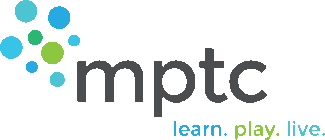Your child is starting to emerge from their toddler years. Are they meeting all of their feeding, speech and physical milestones? Take a look at this comprehensive list and see if you need to schedule a speech, physical therapy or occupational therapy.
3 -3.5 Years

-
Walk upstairs without a rail alternating feet
-
Ride a tricycle
-
Climb up a rock wall independently
-
Run 45 feet in 6 seconds
-
Jump forward 26 inches
-
Throw ball overhand with coordination
-
Throw ball underhand to hit a target from 5 feet

-
Build a tower of 9-10 small blocks
-
Make continuous cuts with child-safe scissors
-
Copy a horizontal line
-
Copy a circle
-
Imitate making a 3-block bridge
-
Can complete in-hand manipulation with stabilization
-
Use fingers to show age
-
Make a fist and wiggle thumb
-
Roll clay or play dough on table to make ropes
-
Trace around the edges of basic shape templates
-
Lace 3 holes or more on a lace board
-
Cut a piece of paper in half with scissors on a more or less straight line
-
Copy a vertical-horizontal cross

- Can be understood by all listeners 75% of the time
- Converse in 3 to 4 word sentences
- Follow simple 3-step related commands
- Ask one-word “why” questions
- Use “what,” “where,” “when,” “how,” and “whose,” when asking questions
- Respond to “wh- “questions (who, what, when, where, why)
- Use regular plural –s (example: socks, shoes)
- Use possessive –s (example: baby’s bottle)

- Dries hands
- Brushing teeth with assistance from an adult
Tip: Give your child simple choices, such as what to wear or what snack to eat

-
Can be understood by all listeners 75% of the time
-
Converse in 3 to4 word sentences
-
Follow simple 3-step related commands
-
Ask one-word “why” questions
-
Use “what,” “where,” “when,” “how,” and “whose,” when asking questions
-
Respond to “wh- “questions (who, what, when, where, why)
-
Use regular plural –s (example: socks, shoes)
-
Use possessive –s (example: baby’s bottle)

-
Able to calm self to sleep at night
-
Expresses emotions
-
Tolerates different clothing textures
- Copes in a noisy environment
Interesting fact: Did you know that it is recommended for your child to get 10-13 hours of sleep per day (including naps) at this age?

- Complete an easy puzzle
- Sort objects
- Counting 1-5
- Understands common dangers, such as hot surface, stairs, etc

-
Cooperative play: play by rules and in groups with increase in dramatic and imitative play

-
Tricycle
-
3 wheeled scooters
-
Play dough
-
Toys that encourage imaginative play such as baby doll, cars, toy kitchen
-
Building blocks
-
Simple puzzles
-
Sorting cups
-
Matching games
-
Toys with various textures, such as kinetic sand, slime, etc.
Pre-School Readiness

-
Separates from parents without difficulty
-
Maintains attention to classroom activities
-
Makes eye contact with adults
-
Independently chooses activities of interest
-
Behavior is easily redirected
-
Uses words to express wants and needs versus using actions/aggressive behavior
-
Able to use words to tell stories, share ideas and express feelings

-
Plays by him or herself
-
Plays next to a peer
-
Cooperates when playing in a group
-
Takes turns
-
Shows concern for friends
-
Helps friends when needed
-
Adapt easily to change of routine

-
Recognizes first name when written
-
Able to print first name
-
Able to print last name
-
Recite the ABC’s
-
Able to name capital letters
-
Able to name lowercase letters
-
Knows letter sounds
-
Identifies rhyming words (i.e., cat / hat)

-
Able to count to 10
-
Identifies numbers 1-10
-
Identifies shapes
-
Knows their colors
-
Understand concepts of over, under, above, below and through

-
Identifies all the parts of the body
-
Identifies all 5 senses (sight, smell, taste, touch and hearing)

-
Navigate a set of stairs with alternating pattern
-
Catching a large ball with hands only from 5 feet away
-
Jumps forward 26 inches
-
Throws a ball overhand to hit target 5 feet away
-
Hops 3-5x on each foot

-
Traces around the edges of basic shapes
-
Copies a horizontal line and circle
-
Makes continuous cuts with child-safe scissors
-
Dresses self with help with fasteners
-
Can put on/ take off coat
-
Puts shoes on correct feet
-
Fastens large buttons
-
Brushes own teeth
-
Draws a person with 3 different body parts
-
Cuts a piece of paper in half with scissors
-
Uses restroom independently

-
Follows simple 3-step related commands (i.e.., get your coat off the hook, put it on and get in line)
-
Begins to use adjectives for color and size
-
Responds to “wh- “questions (who, what, where, when, why)
-
Asks many questions
-
Uses most speech sounds correctly
-
Will put toys away when asked
-
Will follow directions to get own items like pencil, book, coat
